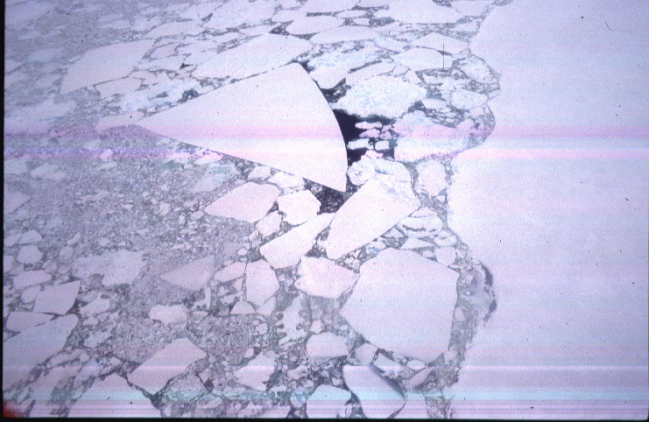 Sea ice is an important component of the global climate system
providing a dynamic and thermodynamic coupling between the polar
oceans and the lower atmosphere. Typically the ice is between 1 to 5
metres thick, covers up to 15 million square kilometres
and drifts up to 15 km per day in response to the wind and
ocean currents. The ice pack is made up of millions of ice floes that
form the grains of a very large scale two-dimensional granular
material. I am interested in improving the modelling of both the
dynamics and thermodynamics of the ice pack, for climate models and
shorter term shipping forecasts.
Sea ice is an important component of the global climate system
providing a dynamic and thermodynamic coupling between the polar
oceans and the lower atmosphere. Typically the ice is between 1 to 5
metres thick, covers up to 15 million square kilometres
and drifts up to 15 km per day in response to the wind and
ocean currents. The ice pack is made up of millions of ice floes that
form the grains of a very large scale two-dimensional granular
material. I am interested in improving the modelling of both the
dynamics and thermodynamics of the ice pack, for climate models and
shorter term shipping forecasts.
Publications
Gray, J.M.N.T. & Morland, L.W. (1994). A two-dimensional model for the dynamics of sea ice. Phil. Trans. Roy. Soc. A 347 , 219-290.Gray, J.M.N.T. & Killworth, P.D. (1995). Stability of the viscous plastic sea ice rheology. J. Phys. Ocean. 25(5), 971-978.
Gray, J.M.N.T. & Killworth, P.D. (1996). Sea ice ridging schemes. J. Phys. Ocean. 26(11), 2420-2428.
Gray, J.M.N.T. (1999). Loss of hyperbolicity and ill-posedness of the viscous-plastic sea ice rheology in uniaxial divergent flow. J. Phys. Ocean. 29(11), 2920-2929.
Back to the departmental homepage.
Please send any feedback, comments or suggestions to ngray@maths.man.ac.uk.
Page last modified: December 22, 2000